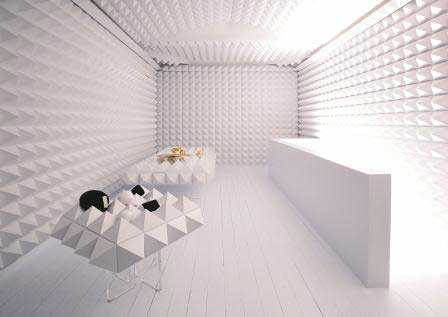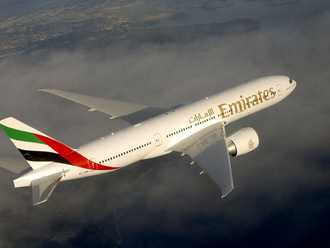
Those who chance upon patterns once favoured by Samurais on ties, or chairs so minimalist that they look like optical illusions, or pop-star Kyary Pamyu Pamyu’s cute-gory appeal, may be forgiven for thinking that these representations of Japan’s aesthetic are somehow a discovery. This has been the case for long, even as we googled anime style animation, scoured shops for manga comics, wolfed down sushi — now ubiquitous on supermarket counters — and coveted the latest Issey Miyake or Kenzo designs.
But as it turns out, Japan is quite aware of how cool it is and the hold its aesthetic has over the hearts and minds of people worldwide. As early as 2008, “soft power” and “cool Japan” were listed by the government as the cornerstones of the nation’s 21st-century economic strategy. Late last year, Japan’s Ministry of Economy, Trade and Industry (METI) debuted the Cool Japan Fund, with an investment of ¥57.5 billion (Dh2 billion), to showcase the nation’s cuisine, crafts, fashion, music and animation across the world.
Masayoshi Watanabe, Managing Director, Japan External Trade Organisation (Jetro) in Dubai and Mena, tells GN Focus, “Though all elements of Cool Japan are given equal importance, in the UAE promotion of Japanese foods, fashion and anime is given special emphasis. This outward-oriented initiative is attractive at present largely because of the lingering presence of an international boom of interest in Japanese culture that has peaked in recent years.”
Worldwide, there are projects that promote the Japanese aesthetic, which Watanabe says is, “unique and simple.” The government has announced plans to fund a dedicated Japan Channel for cable TV in South-east Asia, starting with Thailand in 2014, budgeting for subtitling, dubbing and promotion costs.
Most recently, the Cool Japan project has launched 100 Tokyo, a website that introduces unique products, events and places in Tokyo and all over Japan. It covers design, fashion, art, food, technology, architecture, tourist attractions, accommodation, events and more.
“Our website curates things. This year 100 Tokyo will curate and introduce 100 things that are hot in Tokyo and Japan. We have already chosen an original selection of 30 engaging pieces,” says Hideaki Ibuki, a spokesman from the Creative Industry Division of METI, which handles the editing and production of 100tokyo.jp. In less than a month since inception, it has garnered views from 125 countries.
Among its finds are an inside-out sort of umbrella designed by Hiroshi Tsukamoto, where the metal frame is outside, which allows the user to fold it with the wet side inwards. Another fashion brand that has made it is Sarakichi, which hand-produces a traditional pattern called Edo Komon on ties and handkerchiefs. Regarded as one of the three major dye patterns of Japan, Edo Komon was favoured by Samurai warriors for formal occasions.
One of the places listed among the first 30 is a new building with a very distinctive interlocking wooden structure. SunnyHills is a Taiwanese pineapple cake shop designed by architect Kengo Kuma and hand-built piece-by-piece by skilled craftsmen.
The website also features the futuristic floating bar Jicoo, which floats around Tokyo bay on weekend evenings.
Modern architectural brands include Nendo, a Tokyo- and Milan-based design office established by a group of Japanese designers including Oki Sato, whose work is routinely featured at influential museums across the world.
Thinking visually
At Design Days Dubai in March, Japan made its presence felt in the form of modern pieces, such as a rumbling installation of clocks and pyramid-shaped interior bricks. One of the reasons for the attraction of these pieces is that their Japanese identity does not need to be emphasised.
Koichiro Kimura, a participating designer at Design Days, whose pyramid tiles are a part of the permanent collection at many museums, tells GN Focus, “Although I took over a family business with a 400-year history, I have never been conscious of the tradition in my design. However, I am always surprised when it is said that my design represents Japanese beauty. Perhaps my historic DNA is imprinted in my brain, and the Japanese sensibility is integrated in my pieces unwittingly.”
When growing up, the Japanese adolescent cuts his or her teeth on concepts such as wabi-sabi (a happenstance element, even a flaw, sometimes from age, adding to the beauty of an object), or engawa (inside-out or outside-in). These labels are a part of daily vocabulary and their representations are scattered around, informing a child’s world view.
Yoichi Nakamuta, the owner and curator of Clear Edition and Gallery who brought four artists to Dubai’s Design Days, named the collection Miyabi, a word sometimes translated as heartbreakingly elegant, referring to the bittersweet awareness of the transience of things.
“It’s a word that expresses a traditional Japanese aesthetic. As represented by the Golden Pavilion and Silver Pavilion in Kyoto, the aesthetic that admires elegance and refinement simultaneously exists with the other ideals inspired by Zen Buddhism and wabi-sabi,” Nakamuta tells GN Focus.
In another example, when Japanese architects such as Marunouchi Developments by the Mitsubishi Estate Group venture outside the country, they carry with them concepts such as engawa. Marunouchi’s latest projects in Bangkok include the concept of mixing outside and inside in overlapping layers of space for functions, amenities, nature and events.
Watanabe says, “Simplicity, comfort and eco-friendly are the striking characteristics of Japanese culture in these days. Japan has abandoned the old embellished, extraneous ornamentation and exaggeration in fashion. Though the globalisation process has brought great changes in the outlook of Japanese art, food, fashion and entertainment, Japan has always strived to preserve the fundamental characteristics of tradition and culture, so as not to lose their Japanese touch.”
However, these concepts continue to evolve, absorbing international influences while being peppered by teenage rebellion.
The urban dictionary recently listed Harajuku, named after a trendy Tokyo district where fashion is characterised by over-the-top colours absurdly fused with
various elements of western pop star-inspired attire.
“Intelligence and uniqueness, these are the contemporary Japanese culture. The recent Japanese pop culture originates from the 1980s. During this period, techno pop music emerged and it linked to the sense of comedy preferred by Japanese,” says Kimura.
In the more recent concept of kawaii (non-threatening cuteness), lies the reason for the Hello Kitty’s inexplicable appeal. Kawaii translated variously as lovable, cute, or adorable is a prominent aspect of Japanese popular culture, entertainment, clothing, food, toys, personal appearance, behaviour and mannerisms. Being cute is so acceptable that a financial institution — in a marked departure from the staid image that its counterparts around the world affect — Asahi Bank used Miffy (Nijntje), a character from a series of children’s picture books, on some of its ATMs and credit cards. Even some police forces in Japan have their own mascots. Sanrio, the company behind Hello Kitty and other similarly cute characters painted on some EVA Air Airbus A330 jets as well.
Changing values
It is likely that this aesthetic will continue to change with time. As Watanabe says, “The Japanese entertainment industry is in a period of transition. As the average age of the population continues to rise, the majority demographic is pulling farther and farther away from the youth-based content that has driven the industry’s domestic markets in the past. As well as adapting to an older audience’s demands, industries are also exploring and refining relationships abroad and developing stabler means of overseas distribution.”








